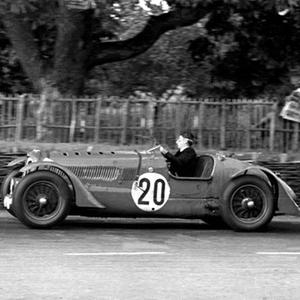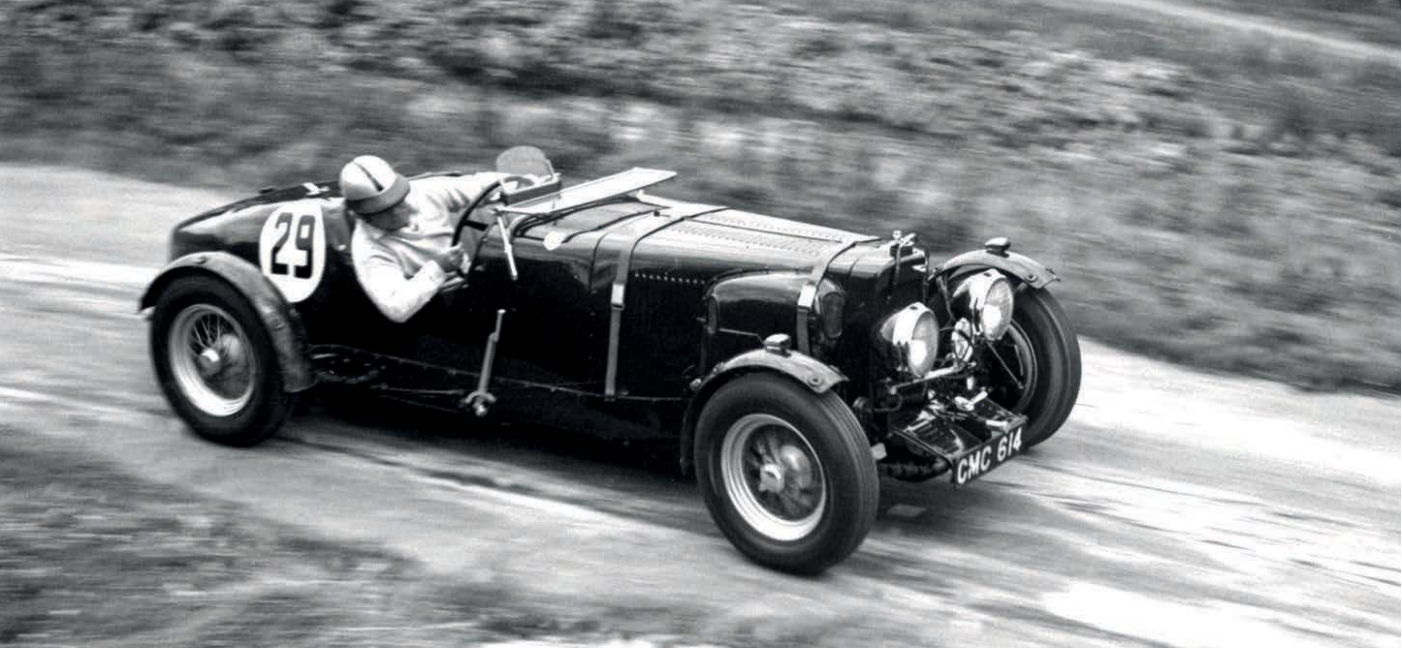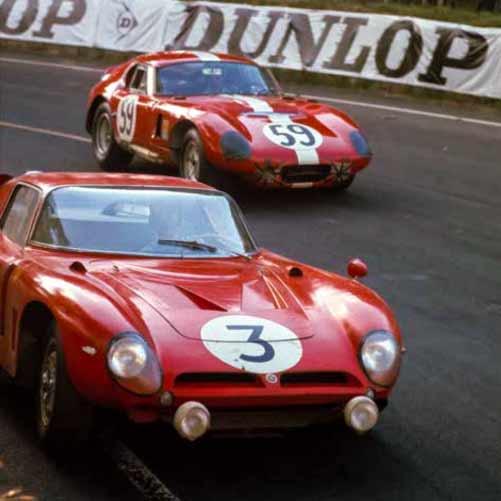
Remembering the “gentleman” privateer whose F1 team was a giant-slayer
A few Sundays from now, historic racing cars will rumble through the streets of a town in Surrey to celebrate a local man whose little privateer team defeated Formula 1’s big-hitters. The event will commemorate the centenary of Rob Walker, son of the heir to the Johnnie Walker whisky business, who famously travelled to the race tracks of the world carrying a passport in which his occupation was described as “Gentleman”. Far from being a dilettante, however, Rob ran his team through the ’50s and ‘60s with such dedication that his star driver, Stirling Moss, described him as “a perfectionist.”

As many as nine Rob Walker Racing Team cars can be seen in action on October 21st in Dorking, not far from the team’s former base at Pippbrook Garage on London Road. If that’s too far from you, no matter: what’s of consequence is that another kind of distance, measured by the passing of the years, makes Rob’s life worth remembering. Rob’s story is admirable not only for what his team accomplished against the odds, but also because he went giant-slaying with manners, integrity, and style.
To tell the full truth, it would have been easy in Rob’s early days to dismiss him as a foolhardy rich kid. As a student at Cambridge University, he flew his Tiger Moth so low over the horsey set at the nearby Cottenham National Hunt that the aviation authorities revoked his pilot’s licence. And when he raced an ex-Prince Bira Delahaye at Le Mans in 1939, at the age of 21, he did so while ostentatiously dressed in a dark pinstripe suit during the daytime and a grey check suit at night – before driving to Paris after the race to party all night.

But for each of those playboy-themed stories, and other similar tales, there’s a strong counterpoint which reveals Rob the grafter. When Britain needed pilots to fight the Second World War, Rob had his flying rights restored and served with the Royal Navy’s Fleet Air Arm. Again, he was grounded, but this time because of deficient night vision - which makes one wonder how little he could see when racing through the darkness at Le Mans. At the Circuit de la Sarthe, Rob’s team-mate Ian Connell had suffered such badly burned feet, because a broken exhaust was roasting the Delahaye’s footwell, that Rob replaced Ian behind the wheel at dawn and drove without a break for 12 hours. The footwell remained stupendously hot, but Rob persevered by having his feet soaked in cold water at every pit stop.
Beneath the ever so polite Englishness, then, lay stubborn determination. Ambition, too, which is why Rob was one of the first to risk John Cooper’s radical new concept of placing the engine behind the driver, and why he offered to bankroll enlargement of the Coventry Climax engine to extract more power from its four cylinders. The first person to order an F2 Cooper-Climax was Walker, and the first Cooper to win a Formula 1 Grand Prix, at Argentina in 1958 in the hands of Stirling Moss, was privately entered by Walker. The second GP of ’58 was won by Maurice Trintignant in a Walker-run Cooper-Climax and the following season Rob Walker Racing scored two more GP victories, both with Moss.

By now Rob Walker’s competitors had no doubt that they should take him seriously. So seriously, in fact, that when Rob was running an outdated Lotus 18 for Moss, Lotus founder Colin Chapman didn’t want to sell him a newer, sleeker Lotus 21. Chapman claimed this was due to Moss having a BP contract and Team Lotus being supported by Esso, but Stirling suspected that Chapman feared Walker beating him at his own game.
Those fears were well-founded. In Walker’s outdated Lotus 18 at Monaco in May ’61, Moss scored one of the greatest upsets in F1 history, beating Jim Clark in the works Lotus 21 and Phil Hill, Richie Ginther and Wolfgang von Trips in their sharknose Ferraris with powerful V6 Dino engines. Less than three months later, at the formidable Nürburgring, Moss did it again, his Rob Walker Racing Lotus 18 winning the German Grand Prix ahead of the Ferraris of von Trips and Hill, Lotus 21 of Clark, factory Coopers of John Surtees and Bruce McLaren, and works Porsche 718/2 of Dan Gurney. Ian Wagstaff’s superb book, Lotus 18: The autobiography of Stirling Moss’s ‘912’, tells how rain that day enhanced Moss’s ability to “defy the notion that the quality of the equipment can be more important than the skill of the driver.”
The day after that unexpected success in Germany, Moss raced a Walker-run Ferrari 250 GT SWB in the 10-lap Peco Trophy race at Brands Hatch, and won – reminding fans of the previous year’s Goodwood Tourist Trophy, when Stirling had swept to such a commanding victory in Walker’s 250 GT SWB that he allegedly kept track of the opposition by listening to the BBC’s live commentary of the race on the car radio. The full story can be found in Doug Nye’s definitive history, Ferrari 250 GT Short Wheelbase: The autobiography of 2119 GT.
With Stirling’s violent crash at Goodwood in April 1962, the Moss-Walker partnership suddenly ended. Six years later, at the British Grand Prix at Brands Hatch, a Lotus 49 would bring Rob Walker Racing’s ninth and final F1 victory and Jo Siffert’s first. That day echoed Nürburgring ’61, because Walker’s privateer Lotus beat two works Ferraris (driven by Chris Amon and Jacky Ickx) into second and third places.
By Phillip Bingham







Leave a comment
This site is protected by hCaptcha and the hCaptcha Privacy Policy and Terms of Service apply.